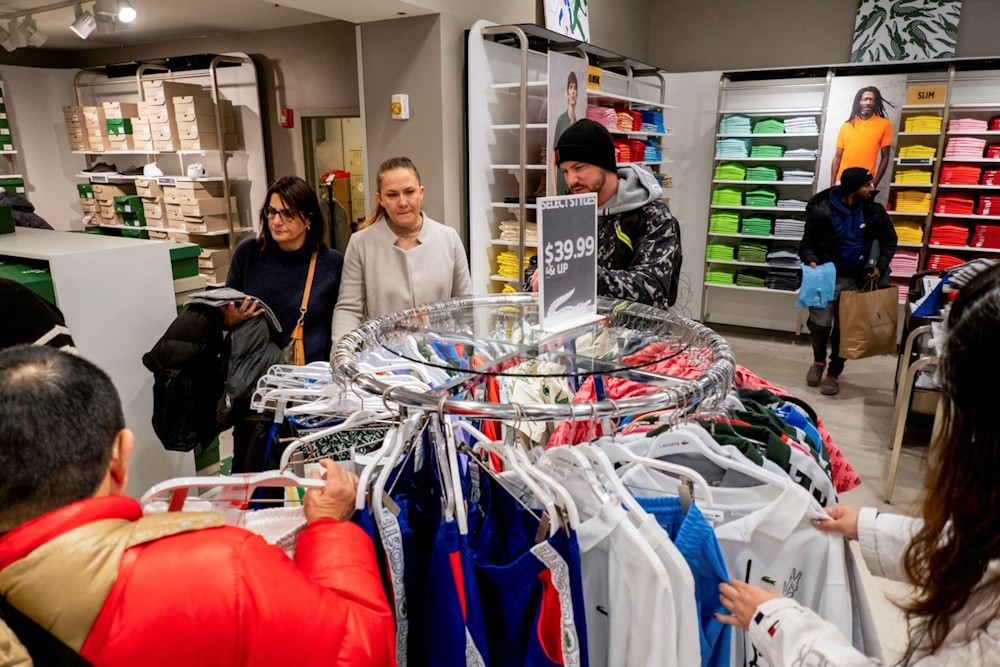Retailers Enlist AI in Fight Against Returns

Apparel and fast-fashion brands such as Perry Ellis and H&M are turning to a new weapon in the fight against costly online returns: artificial intelligence.
They are using AI to sharpen product descriptions and recommendations, steer certain ads away from shoppers most likely to return those products, and aim advertising toward consumers they believe will hold on to their purchases.
“What we can’t do is stop Amazon letting somebody purchase. But what we can do is boost the targeting for the audiences that we think are less likely to return,” said James Poll, chief technology officer at Acorn-i, an e-commerce agency whose clients include Perry Ellis.
Returns are a blight to online retailers: They need to make the process smooth enough to encourage sales, but prevent the cost of returns from swamping their balance sheets.
Return-processing costs as a percentage of overall sales in 2022 held roughly even from the year before at 16.5%, according to the National Retail Federation. But the problem has grown more pressing as inflation crimps both consumers’ wallets and retailers’ bottom lines.
The impulse looks like it’s here to stay. Seventeen percent of American consumers surveyed in June and July said they had returned at least six items over the past six months, a jump from 7.1% the previous year, according to logistics software company Narvar. People who shop the most also tend to account for more returns, presenting another conundrum for retailers, experts say.
Some companies have responded with strictly analog solutions. Online retailer Dress the Population, for example, gives discounts to people who agree not to return their purchases.
Thirty-five percent of retailers have begun charging for returns over the past year, according to a September survey of 500 U.S. retail executives by goTRG, which provides returns software and management services. Twenty-nine percent have shortened their return windows and 17% have begun offering store credit instead of refunds during that time period, goTRG said.
Other stores have been using AI to manage returns for a while. The AI team at fast-fashion chain H&M, for example, since 2018 has used the technology to better match supply with demand and give shoppers more accurate recommendations, according to a spokesperson. The idea is that shoppers who order clothes that don’t quite fit or feel right, or who go with a next-best choice when the item they want is out of stock, are more likely to send those goods back.
In recent months, however, marketers at retail outlets have begun experimenting with more novel applications of AI.
Dutch online apparel store Omoda—which last year saw one shopper scoop up 10 winter coats only to return nine of them—worked with Google and marketing agency DEPT to develop a machine-learning system to help limit the rate of returns on sales generated by search ads.
The system combines return rates for certain types of products with an algorithm that uses Omoda’s data to predict how likely groups of customers are to return what they bought. The system then forecasts the total profit—or loss—each order will ultimately generate, moments after it’s placed. It also tracks which customers actually return their purchases.
Omoda and DEPT later feed all this data into Google’s ad-buying algorithm to target search ads more precisely. Usually, ads go to shoppers most likely to buy something, but Omoda instead wanted to focus on their long-term value, which factors in the predicted cost of returns. The company’s goal was to avoid advertising products to the very shoppers most likely to purchase, but then return them, said Omoda Chief Executive Jan Baan.
Since Omoda began using its model in May, it has seen a 5% drop in returns and a 16% rise in profits among all sales driven by search ads, said Baan.
Perry Ellis has worked with Acorn-i over the past year to reduce the costs of its returns on Amazon in the U.K. After identifying items with the highest return rates, they used AI sentiment-analysis tools to determine which phrases in those products’ descriptions might create confusion over key elements, such as size or fit, that most often lead to returns, said Acorn-i co-founder Claire Leon. Generative AI then created descriptions that would better match these products with shoppers’ questions and concerns, along with common search keywords, she said.
One Perry Ellis shirt, for example, went from a description that read “Machine Washable” and “Cotton Oxford Fabrication” to one saying “Made from 100% independently certified organic cotton” that shoppers can “Machine wash according to instructions on care label.”
Perry Ellis then combined those new descriptions with behavioral data drawn from Amazon’s database to target its ads, said Poll, Acorn-i’s CTO.
Over the course of around a year, return rates for products in the project declined 15%, according to a Perry Ellis spokesperson. The company plans to expand the effort into other European markets if its Amazon U.K. experiment continues to show results, the spokesperson said.
For a while now, retailers have been trying to trim return rates with AI by, for example, using machine-learning to place shoppers into smaller and smaller groups based on shared characteristics, said Brad Herndon, partner at consulting firm PwC. Despite some limited successes, however, the AI isn’t mature enough to address these sorts of problems on a large scale, he said.
At the moment, there’s no simple way to tackle returns without either swallowing the cost or charging loyal customers more money and possibly losing their business, said Brian Kalms, partner and managing director at consulting firm AlixPartners. That leaves retailers little choice but to experiment with AI to make the most of their own consumer data, he said.
“People have become more addicted to the drug of returns, and you don’t want to take that away,” Kalms said.
